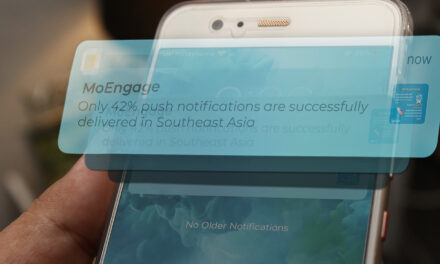They are in need of “Decluttering,” finds Accenture Interactive Research.
50% of marketing executives across the Asia Pacific (APAC) region say that the past year has completely exhausted their employees, according to new research from Accenture, the global professional services company.
In Singapore, this figure jumps to 72%.
Accenture said that while this comes as no surprise given the heightened levels of employee burnout cited around the world, there is a silver lining. Some marketing organizations are outperforming their peers in revenue growth, profitability and customer satisfaction.
The Thrivers
Produced by Accenture Interactive and titled, “The Great Marketing Declutter”, the report surveyed more than 1,000 marketing executives globally, of which 200 were from APAC. It identified a small group of marketers – 19% in APAC and 17% globally – whose marketing organizations are thriving despite all the change, uncertainty and complexity posed by the past 18 months.
This group – which the research identifies as “Thrivers” – has zeroed in on their customers’ evolving motivations and what’s needed to serve them in smarter, better ways. They are decluttering marketing to manage complexities, focusing on what matters, discarding what does not and rewiring the rest.
As a result, they find greater meaning in their work, which is critical to serving the business and its customers and to retaining and attracting employees. The vast majority (87%) of APAC and Singapore Thrivers say that their marketers have been energized by a new purpose of servicing customers’ rapidly changing motivations. This figure is higher than the APAC average of 30%.
Thrivers Cut Through The Clutter and Outperform Survivors
The report breaks the remaining APAC respondents down into two other groups, based on specific aspects of their customer relationships: “Strivers” — accounting for 60% (Global: 66%) of the executives surveyed — who have some autonomy to meet customer needs but have limited awareness of customer changes; and “Survivors” — accounting for the remaining 21% (Global: 17%) — who are burnt out and not in tune with the pulse of customer change and assume that such change is only temporary.
38% of Thrivers in APAC (Global: 59%) noted that their marketing organization is much stronger today than last year because they have been pushed to think about marketing entirely differently.

The research pinpoints how Thrivers are leading the way in both their thinking and actions, which can be boiled down to the following five rules:
- Reacquaint yourself with your customers: Accepting that the customers they once knew have changed, Thrivers have tossed out their old beliefs about customer preferences and know that assumptions can be dangerous. They listen to customers and rewire marketing around who customers are at a moment in time, and rank customer satisfaction as their top measure of success.
On average, only about one out of two of APAC marketers reported using either social listening technologies and strategies (56%) or surveys (51%) to better understand their customers’ needs and values. In Singapore, this was 48% and 56%, respectively. This highlights that firms are generally falling short in terms of implementing strategies and technologies to develop a greater understanding of their customer’s needs. Thrivers in APAC report much higher numbers, with about a third (74%) leveraging surveys and social listening. - Find your collective difference: Knowing that delivering differentiation on customer experience takes unity and collaboration, APAC Thrivers are 17% more likely than Survivors to report that their input is highly critical to key business decisions on customer experience. They recognise that syncing all functions — product development, commerce, sales, service and marketing — is necessary to unleash differentiation.
- Move at the pace of change: The overwhelming majority of APAC Thrivers (97%) believe that customers’ behaviours are changing faster than ever. As a result, they aim to deliver messages, content and experiences that are relevant to customers’ real-time needs. In addition, they’re nearly twice as likely as Survivors (100% vs 51%) to have increased their investments to scale at speed.
- Figure out what no one wants to do: The marketing ecosystem has become exponentially more complex due to an explosion of touchpoints, technologies, regulatory issues and partners. APAC Thrivers have outwitted complexity by leaning into process automation and industrialising operations, and they are significantly more likely than Survivors to invest more to improve the ways of working with ecosystem partners (97% vs. 39%). They are equally thoughtful about discarding tasks as they are about completing them, giving their marketing organisation the edge needed to succeed.
- Own what you want to stand for: APAC Thrivers own their brand purpose, empathetically and authentically connecting with customers and delivering on what customers value. They are nearly five times more likely than Survivors to view the shifts in pandemic-fuelled customer values as an opportunity to rethink marketing’s role and reimagine their brand purpose.
“On a global and regional level, marketers who have thrived despite the disruptions were able to seize this unprecedented reality to redefine what they do, how they do it, and the overall role of marketing in the business. By uniting their colleagues behind a common ambition and brand purpose – from the leadership to the most junior of employees, and connecting with customers through empathy and authenticity, these Thrivers are laying the groundwork for relationships that can endure even as customer preferences shift. This is why, instead of burning out, they are igniting a rallying cry that is changing marketing to produce greater returns. Brands today simply cannot operate from an outdated playbook,” said Thomas Mouritzen, Accenture Interactive’s lead for Southeast Asia.
The report also provides examples of how some leading organizations globally and in APAC — including Blue Buffalo, Diageo, Direct Line Group and NRMA Insurance — have decluttered their marketing models for success. The full report can be found here.



















